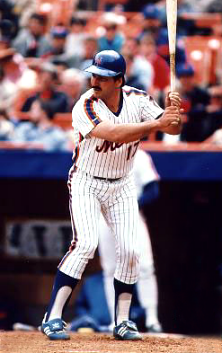
"Oh my Gary, that is as good as it gets.
That is a beautiful play.
This is JUST as good as it gets.
That is a spectacular play.
That is a showstopper right there."

The Life and Good Times of baseball legend Keith Hernandez

One of the first things I learned from studying the PITCHf/x data is that fastballs typically move quite a bit to the side. Nobody much talks about this. Actually, that's not true, the other day I happened to catch Brandon Webb's start against the Mets and one of the broadcasters mentioned Webb's sinker that "moves in on a right-handed hitter."
That's true, Webb's sinker (which is a kind of fastball) moves sideways, towards a right-handed hitter, about nine inches. And Dan Haren's fastball moves in the same direction by six inches. John Maine? Eight inches in on a right-handed batter. Just about all right-handed fastballs move in an a right-handed hitter (and likewise, lefty fastballs move the other way—away from a right-handed batter).
Hernandez, in his book, tells us something important about the typical tailing action of a fastball: It makes it difficult to come inside to the opposite-hand hitter. Actually, Hernandez is discussing Phillies left-hander Danny Jackson, who had quite a bit of tail on his fastball. When Jackson throws to a right-handed batter, the fastball tends to tail away from the hitter.
That's great for pitching outside, but it makes it hard to pitch on the inside corner, as the ball tends to drift out over the heart of the plate. Here's Keith:
After thirteen pitches tonight in Philadelphia, Danny Jackson hasn't come inside one time. One reason is that his fastball tends to run away from these right-handed Braves hitters. If that pitch does not start out three or four inches inside, if instead it starts out over the inside corner, it will run toward the middle of the plate and right onto the barrel of the bat.
For the rest of this outstanding piece by John Walsh, please visit the Hardball Times.
 During one of my recent walks in the Hamptons out on Long Island, a young lad in a Yankee cap came up to me and asked me about steroids. He told me he wasn't sure what they were or what the word even meant.
During one of my recent walks in the Hamptons out on Long Island, a young lad in a Yankee cap came up to me and asked me about steroids. He told me he wasn't sure what they were or what the word even meant.


